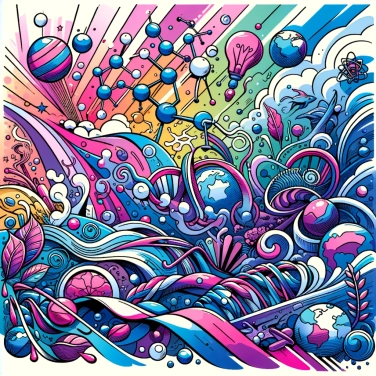The sand is hot on a sunny beach because it has a low thermal capacity and the ability to absorb and retain the heat from the sun. It also contains minerals that reflect less heat than other surfaces, which contributes to its quick warming.

When the sun's rays hit the sand, the grains absorb a good portion of that energy directly. Each grain of sand has a tiny surface but, together, these grains represent a vast absorption surface. The result? The sand captures a lot of heat quickly. This absorbed solar energy transforms into heat, causing a sometimes very high increase in temperature, especially on a very sunny day. The sand reflects only a small amount of energy: it retains a large part for itself and quickly becomes very hot to the touch.
The sand heats up quickly because it is a poor thermal conductor. This means it has difficulty quickly transmitting the heat received from the sun to the lower layers. As a result, the heat remains accumulated at the surface, making the sand burn under our feet while, just a few centimeters below, it stays cool. Unlike materials like metal, where heat circulates quickly throughout, each grain of sand retains its heat near the surface, causing the beach to become uncomfortable very quickly when exposed to the sun.
Sand is mainly composed of quartz, a clear mineral that easily absorbs and stores the sun's heat. Some minerals, darker or metallic like magnetite, accumulate even more heat and raise the temperature of the sand. In contrast, beaches with lighter minerals or crushed shells remain a bit less scorching, as they absorb solar radiation less effectively. In short, if your feet are burning, it's often due to the minerals present in the sand!
Sand, with its light color, acts somewhat like a mirror but an imperfect one. It reflects part of the solar radiation, while the other part penetrates and gets trapped just below the surface. This phenomenon creates a buildup of heat near the ground, as the absorbed rays quickly warm the grains of sand. The more these grains absorb solar energy, the higher their temperature rises. As a result, throughout the day, heat continues to accumulate, which explains why sand can become scorching hot, especially around noon or early afternoon.
On cloudless days, the sand receives direct sunlight, and without cloud cover to block it, heat quickly accumulates at the surface. In contrast, on overcast days, clouds act as a natural sunscreen, limiting the heating of the sand. The wind also changes the situation: a light breeze sweeps away the layer of warm air accumulated just above the surface, which limits overheating of the sand. However, be careful, as a wind that is too hot and dry sometimes exacerbates the drying of the surface and accelerates warming. Likewise, humid or marine air slightly reduces the perceived heat, making the sand more comfortable underfoot.
Darker shades of sand absorb more solar radiation than lighter shades, which is why volcanic sand or sand rich in dark minerals is often even hotter to the touch.
Sand cools rapidly at night due to its low heat retention capacity, which explains the significant temperature fluctuations on desert beaches as soon as the sun sets.
Some desert creatures have special adaptations for walking on burning sand; for example, some lizards alternately lift their feet to avoid burning themselves.
In some deserts, the temperature of the sand can reach up to 75 degrees Celsius, hot enough to cook an egg directly on the ground.
Yes, the wind plays a key role in cooling the surface of the sand by accelerating thermal exchange with the surrounding air. On windy days, the sand will often be cooler on the surface compared to calm and sunny days.
To avoid burning your feet, it is advisable to wear sandals or suitable shoes for walking on hot sand. Walking near the tide line, where the sand is damp and cooler, is also a good option.
Yes, absolutely. The mineral composition, size, and color of the grains strongly influence the heat absorption and retention of sand. For example, darker volcanic sand heats up much more than light sand primarily made up of shells or quartz.
Sand has a low specific heat capacity, meaning it does not retain heat for long once it stops being directly exposed to the sun. Therefore, as soon as the sun sets, the sand quickly releases the accumulated heat and cools down rapidly.
Black sand absorbs a larger portion of solar radiation due to its dark color. Unlike light sand, which reflects more light, black sand accumulates heat more easily, making it significantly hotter in the sun.

0% of respondents passed this quiz completely!
Question 1/5